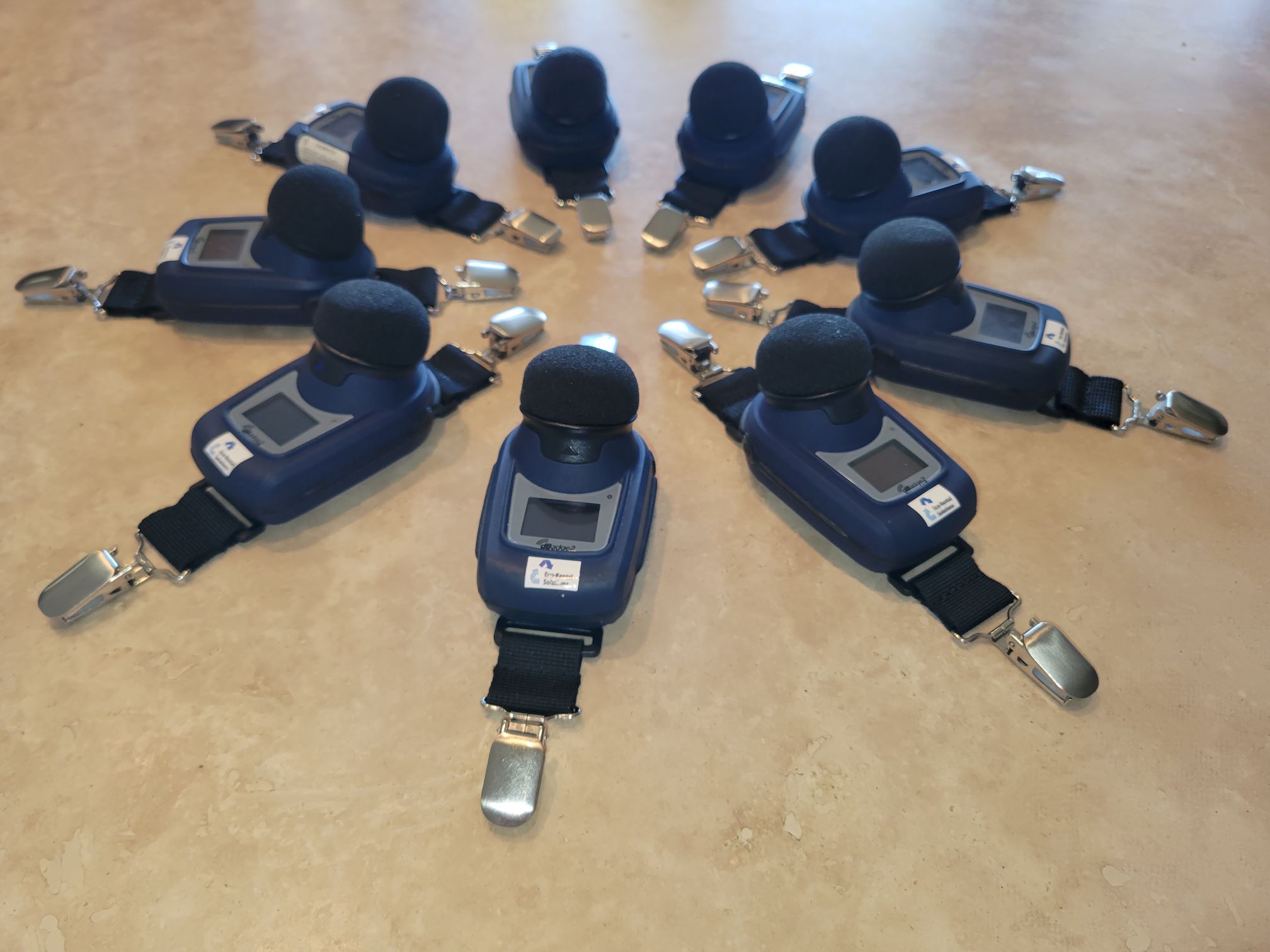Noise:
Occupational Exposure and Hearing Loss
Noise is unwanted sound. Millions of Americans are exposed to hazardous levels of noise at work, and 1 in 8 people suffer from hearing loss. Not only does hearing loss have negative impacts while the person is at work, it also follows them home. Temporary hearing loss is a sign that the noise levels have been too loud. This type of hearing loss can get better if the ears get a break from the loud environment. Permanent hearing loss, on the other hand, is irreversible. But exessive noise does not only lead to the inability to hear, it can also affect your overall well-being and increase the likelihood of developing heart disease, high blood pressure, stress, and sleep issues. Loud noise can also reduce productivity, make it harder to hear alarms, and contribute to accidents and injuries.
Signs that you may be exposed to hazardous levels of noise include:
- Having to yell at people next to you to be heard
- Having to turn up the radio when you leave work because the volume is no longer loud enough for you to hear
- Hearing a ringing or buzzing sound in your ears
- Feeling uncomfortable because it is loud
Permanent But Preventable
Finding out if you are exposed to excessive levels of noise is the first step in preventing hearing loss. Sources of loud noise in occupational settings include using power tools, working on the runway close to jet engines, and various manufacturing activities. But noise exposure does not just occur in the workplace, it can also happen during recreational activities, such as going to a concert or sporting event, practicing shooting, riding a motorboat, going to the arcade, or using headphones. Exposures to chemicals can also induce hearing loss, including certain pesticides, solvents, lead, and pharmaceuticals.
Measure and Evaluate

Noise can be measured with a noise dosimeter or a sound level meter. The noise dosimeter is attached to a worker's shoulder to represent the ear, whereas the sound level meter is used to collect area samples for noise. The recorded data is used to compare the noise levels to the permissible noise exposure. If the average noise level reaches the action level, which is 85 dBA, then the employees have to be enrolled in a hearing conservation program that includes training and annual hearing tests (audiograms). If the noise levels are louder than 90 dBA, then hearing protection must be provided until other controls that reduce the noise levels can be designed and implemented.
We Provide the Following Services
If you are concerned about noise exposures in your workplace, we can assist with the following services:
- Conduct employee noise testing
- Collect area sound measurements
- Develop a hearing conservation program
Call (562) 357-7783 today or use our Website Form to learn more about our services.
More Resources:
Exposure Limits for Noise:
8 CCR Section 5096
Hearing Conservation Program:
8 CCR Section 5097
Cal/OSHA Noise Guidance:
Hazardous Occupational Noise